Antelope Island in the Great Salt Lake
May 30, 2007.
We did not arrive in Layton, UT until after noon.
As you will recall we were in Salt Lake City earlier in the day touring Temple
Square.
After touring the Temple
Square area in Salt Lake City we returned to the motorhome and headed
south to a Super Wal Mart located in Layton, Utah at exit 334, where we dropped
the motorhome and headed to Antelope Island in our Saturn.
When we returned
we moved the motorhome to a strip mall parking area adjacent to Wal Mart because
there was more space available for overnighting RV's.

We visited Antelope
Island, a Utah State Park located in the Great Salt Lake. The Great Salt
Lake, as you may know, is the largest natural lake west of the Mississippi River.
The lake is a remnant of pre-historic Lake Bonneville, which covered more than
20,000 square miles during the Ice Age. Four distinct shorelines from the lake
may be seen from Antelope
Island and include, Bonneville, Provo, Stansbury, and Gilbert.
Currently
Great Salt Lake is 75 miles long by 28 miles wide covering 1,700 square miles.
At this level, maximum depth is about 33 feet. Size and depth vary greatly with
seasonal evaporation and precipitation.
Water flows into the lake from four
river drainages, carrying 2.2 million tons of minerals into the lake each year.
Great Salt Lake has no outlet; water leaves only through evaporation. Because
of this, high concentrations of minerals are left behind. Salinity level ranges
between four and 28% compared to the ocean at 3%.
Salinity is too high
to support fish and most other aquatic species. However, brine shrimp, brine flies,
and several types of algae thrive in the lake. Brine shrimp and brine flies tolerate
the high salt content and feed on algae. Brine flies and brine shrimp are primary
food sources for millions of migrating birds.
Nearly 80% of Utah's wetlands
surround Great Salt Lake, making its ecosystem one of the most important resources
in North America for migratory and nesting birds. The area hosts 250 bird species
each year, which represents a significant part of the six to nine million migratory
birds passing through the Pacific Flyway.
The lake and its marshes provide
resting, nesting, and staging areas for these birds.
Oolitic sand is a unique
feature of Great Salt Lake. These round grains of sand are formed when mineral
grains or brine shrimp fecal pellets are coated by concentric layers of aragonite,
a form of calcium carbonate. This is similar to how pearls are formed. I did not
have time to find and closely examine this unique form of sand. This will have
to wait until our next visit.
With that as background it is time for us
to head across the causeway connecting Antelope
Island with the mainland.
Causeway connecting Antelope
Island in the Great Salt Lake to the mainland
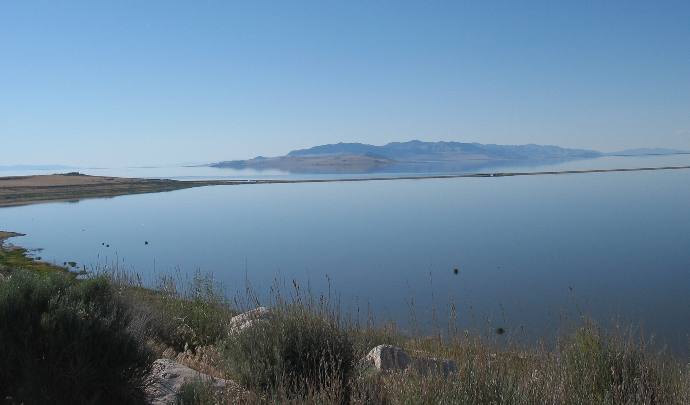
Joyce
took this picture from Antelope
Island about 5-miles south of the causeway looking north.
Burrowing
owls of Antelope Island in
the Great Salt Lake
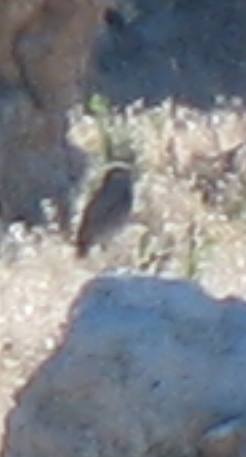
Typically, burrowing owls make their
nests in open grasslands using abandoned burrows of prairie dogs or ground squirrels.
However, since Antelope Island
has no prairie dogs or ground squirrels, the owls utilize abandoned badger
dens. Feeding primarily on grasshoppers, burrowing owls are the only subterranean
owls in North America.
Burrowing owls of Antelope
Island in the Great Salt Lake
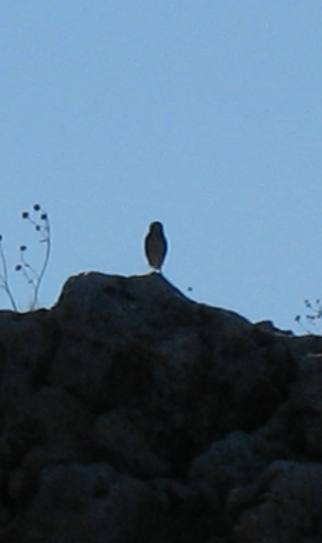
If you are visiting Antelope
Island stop at the Visitor Center and look for these small owls perched
on large boulders east of the Visitor Center. These aren't the best pictures but
they were at a distance and looking into the sun. I share them with you so that
you will know what to look for when you visit Antelope
Island. Once you know where to look you can spot them fairly easily. They
can be seen both from the visitor center and from the road that runs south to
the Ranch where the road passes east of the visitor center.
Shore birds feeding along
causway to Antelope Island
in the Great Salt Lake
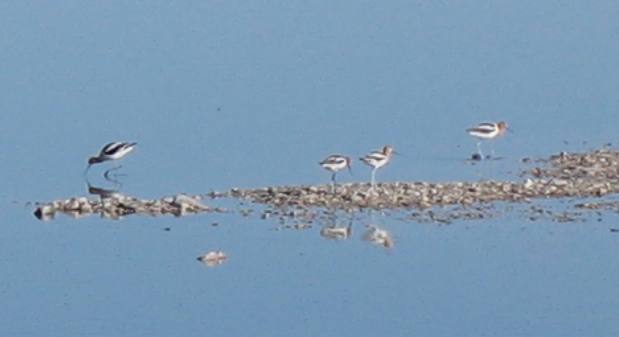
Avocet
were visible by the hundreds along the shore where they were feeding on brine
shrimp.

Shore
birds along causeway to Antelope
Island in the Great Salt Lake
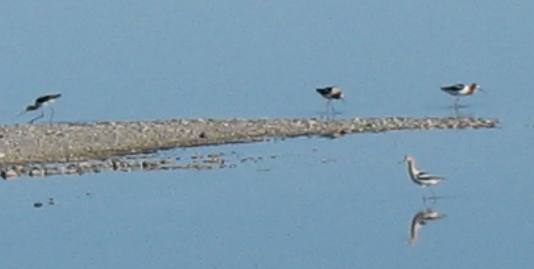
American Avocet.
American
Avocet
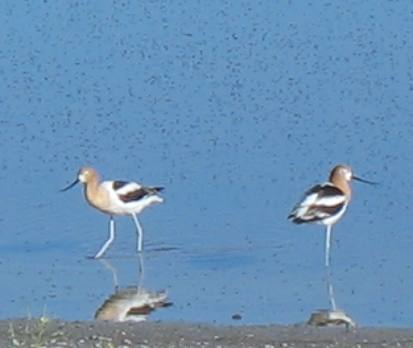
American Avocet.
You can clearly see brine flies that provide food
to several migrant species that stop by here on their way to other places.
Antelope Island in the Great
Salt Lake viewed from the causway
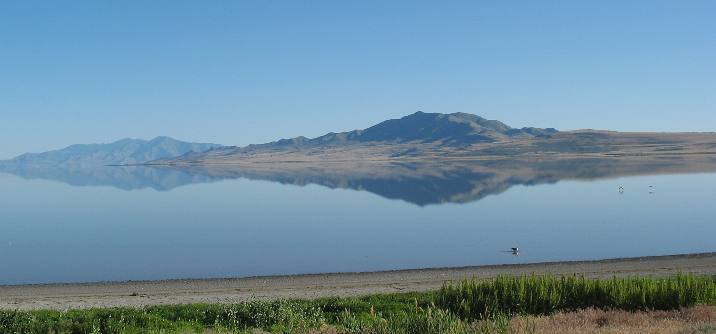

The highest and most
rugged portions of Antelope
Island are home to a variety of species. The rocky slopes provide nesting
habitat for rock wrens. The cliffs and air currents near them are home to golden
eagles and other raptors. In addition the craggy topography makes ideal habitat
for bighorn sheep.
The rugged portion of Antelope
Island is that part in the center of this picture taken from the causeway
looking to the southwest.
Does it get any better?
Until
next time remember how good life is.
Mike
& Joyce Hendrix
Until next time remember how good life
is.

Mike
& Joyce Hendrix who we are
We
hope you liked this page. If you do you might be interested in some of our other
Travel Adventures:
Mike & Joyce Hendrix's
home page
Travel
Adventures by Year ** Travel
Adventures by State ** Plants **
Marine-Boats ** Geology
** Exciting Drives ** Cute
Signs ** RV
Subjects ** Miscellaneous
Subjects
We
would love to hear from you......just put "info" in the place of "FAKE"
in this address: FAKE@travellogs.us
Until next time remember how good life
is.